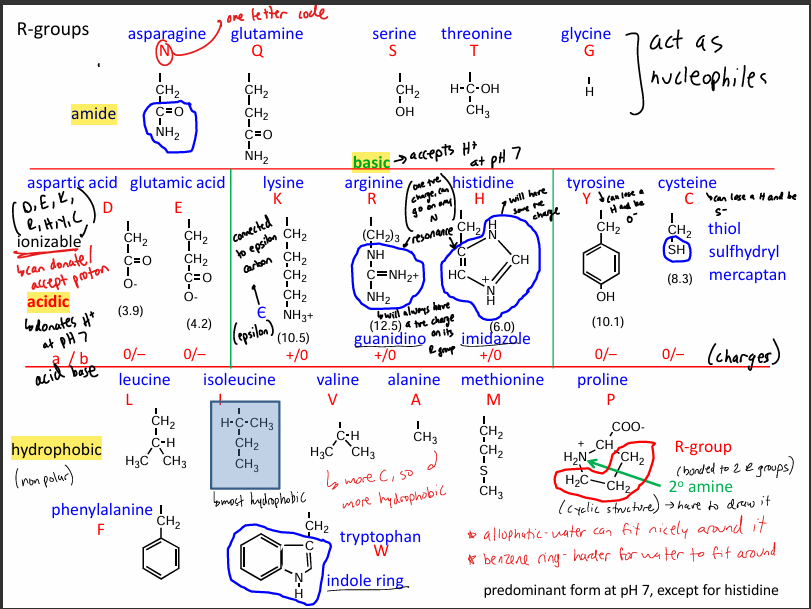Midterm 1
1/6
There's no tags or description
Looks like no tags are added yet.
Name | Mastery | Learn | Test | Matching | Spaced |
|---|
No study sessions yet.
7 Terms
components of cells
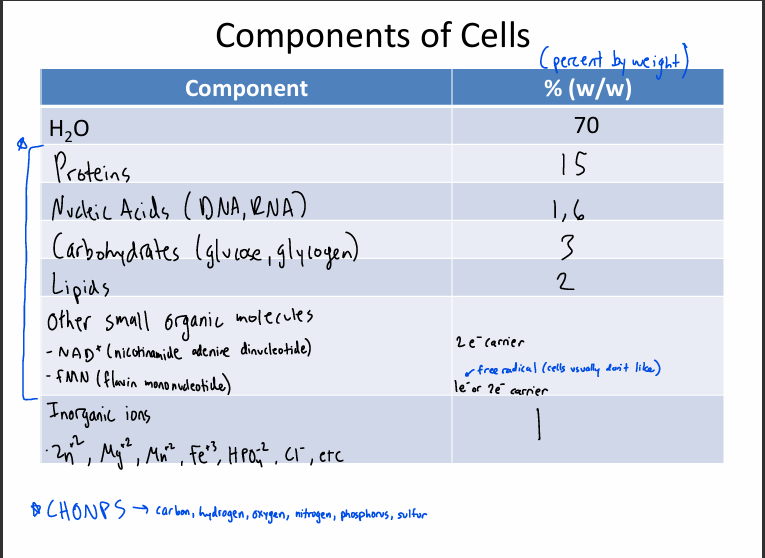
euglena experiment
mg+2 deficient causes the cell to look multilobed
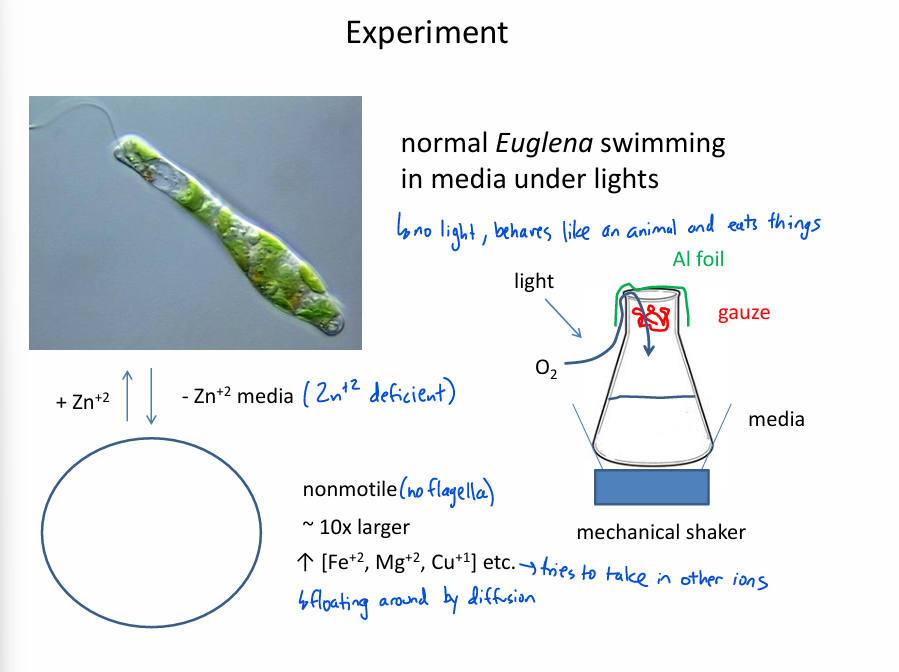
amino acids
inside is nonpolar/hydrophobic
outside is polar/hydrophillic
bc outside environment is aq soln
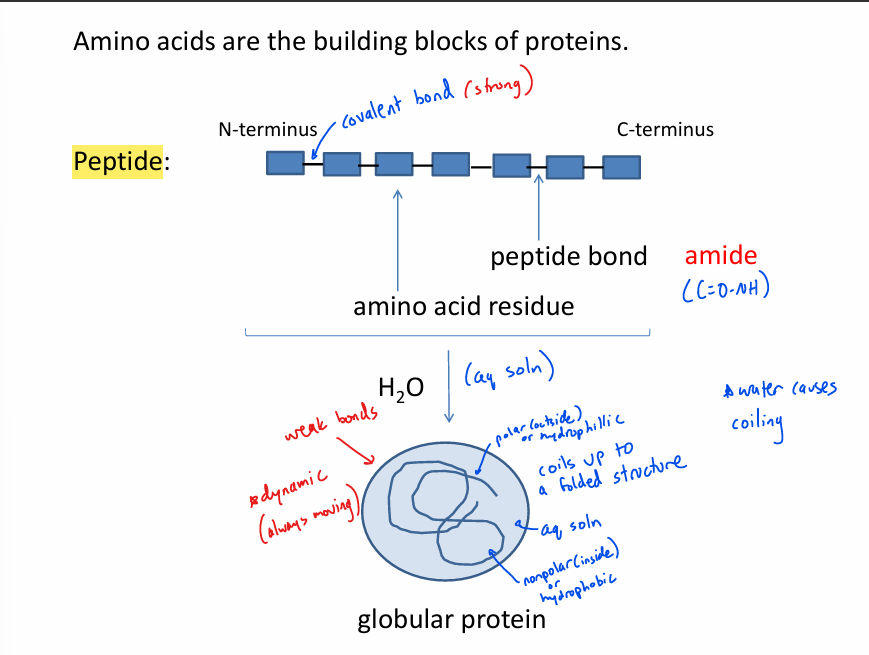
amino acids (cont)
L-amino acid (means on left)
all aa except glycine bc it doesn’t have a chiral center(R group is an H)
L and D aa CANNOT bond together
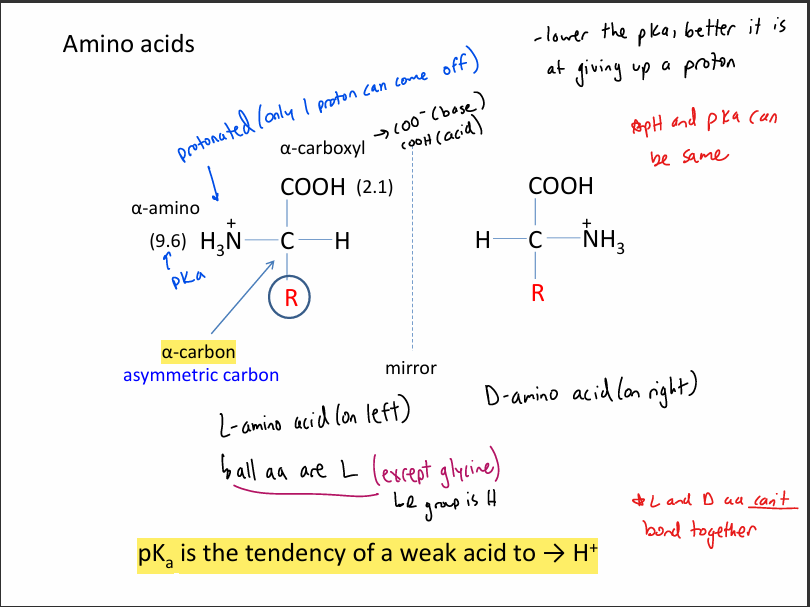
pKa vs pH
pkA is derived from Ka(acid dissociation constant) of an acid
determines how much the acid is dissociated in soln
the LOWER the pKa, the STRONGER the acid
when pH=acid’s pKa, the acid is 50% deprot and conc of the acid=conj base
pH expresses conc of H+ ions in a soln
pKa is special pH for that molecule
below that pH, molecule will be bonded to an H+ ion
above that pH, it won’t
at the pH, it’ll be 50/50
ALL THE AMINO ACIDS
ionizable(can accept/donate a H+)
acidic aa (-vely charged, ionizable)
aspartic acid(D), glutamic acid(E)
basic aa(+vely charged)
lysine(K), arginine(R), histidine(H)
tyrosine(Y), cysteine(C)
-vely charged
hydrophobic
leucine(L), isoleucine(I), valine(V), alanine(A), methionine(M), proline(P), phenylalanine(F), tryptophan(W)
polar side chains
serine(S), threonine(T), cysteine(C), asparagine(N), glutamine(Q), tyrosine(Y)
nonpolar, nonpolar side chains
glycine(G), alanine(A), valine
